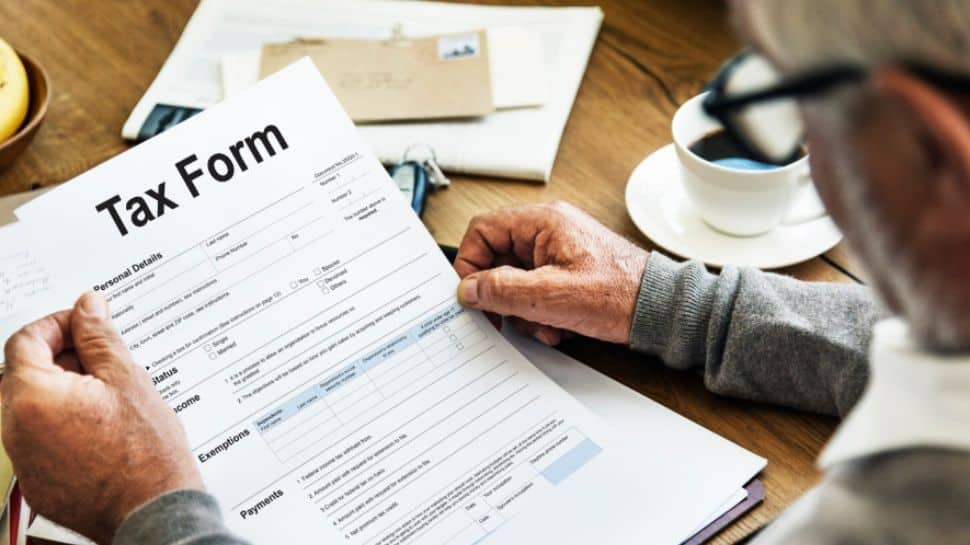Business
EVs, big SUVs drive Ford Q3 U.S. sales up 8.2%

Ford Mustang Mach-E and F-150 Lightning on display at the New York International Auto Show on March 28, 2024.
Danielle DeVries | CNBC
DETROIT – Sales of electric vehicles and large SUVs drove Ford Motor‘s third-quarter sales up by 8.2%, the Detroit automaker reported Wednesday.
Ford said sales of all-electric vehicles increased by 30.2% during the period to a new quarterly record of more than 30,600 units. Its “electrified” vehicles, including EVs and hybrids, increased 20% compared with the same period a year earlier.
Sales of Ford’s SUVs increased nearly 10% during the quarter, including massive gains for its larger SUVs as well as the Mustang Mach E EV, which was up 51% from a year earlier.
EV sales during the third quarter are expected to be a record, as buyers pulled ahead plans to purchase a new zero-emissions vehicle ahead federal EV incentives of up to $7,500 ending in September.
Ford CEO Jim Farley on Tuesday said he “wouldn’t be surprised” if sales of EVs fell from an industry market share of around 10% to 12% this month — which is expected to be a record — to 5% after the incentive program ends.
Cox Automotive forecasts sales of EVs hit 410,000 during the third quarter, up 21% from a year earlier. That would easily be the highest amount of EVs ever sold in a quarter in the U.S., as well as a record 10% market share.
Sales of EVs as well as plug-in hybrid electric vehicles that also qualified for federal incentives are expected to assist in boosting third quarter vehicle sales up between 4% and 7%, according to forecasts from Cox and CarMax’s Edmunds.
This is breaking news. Please check back for additional details.
Business
Cloud infra deal: Microsoft partners with Anthropic and Nvidia; $45 billion cloud deal to reshape AI infrastructure – The Times of India

Microsoft on Tuesday announced a sweeping cloud infrastructure partnership with artificial intelligence firm Anthropic and chipmaker Nvidia, marking a significant realignment in the technology giant’s AI alliances as it moves further away from exclusive dependence on OpenAI, AP reported.Anthropic, the developer of rival chatbot Claude, said it will commit to purchasing $30 billion worth of computing capacity from Microsoft’s Azure cloud platform under the new agreement. As part of the same partnership, Nvidia will invest up to $10 billion in Anthropic, while Microsoft will invest up to $5 billion in the San Francisco-based company.The joint announcement from Anthropic CEO Dario Amodei, Microsoft CEO Satya Nadella and Nvidia CEO Jensen Huang was made just before the opening of Microsoft’s annual Ignite developer conference.Microsoft had long served as OpenAI’s exclusive cloud provider, but that arrangement began to shift earlier this year. While the two companies continue to collaborate, OpenAI has expanded its cloud strategy by striking major deals with Oracle, SoftBank and other chipmakers and data-centre operators to secure additional computing capacity.The latest move strengthens Microsoft’s position in the rapidly intensifying AI infrastructure race and gives Anthropic access to one of the world’s largest cloud ecosystems as competition with OpenAI accelerates.
Business
Property Prices Have Surged 500% In These Religious Cities, NCR Realtors Enter The Market

Last Updated:
Bolstered by the popularity of Premanand Maharaj and the Banke Bihari Temple Corridor, Varanasi’s land prices have gone from Rs 20,000 per 900 sq ft to Rs 1 crore in just 4 years
Ayodhya land prices increased 50-100% due to Ram Temple construction.
In a striking shift from the traditional focus on metro and tier-1 cities, the real estate landscape is witnessing a new trend as pilgrimage and religious cities are becoming prime destinations for homebuyers and investors. Cities such as Ayodhya, Varanasi, Prayagraj, Vrindavan, and Haridwar are seeing a surge in property demand, with some areas experiencing price jumps of up to 500%.
Experts attribute this boom to a combination of religious tourism, major infrastructure projects, and increased economic activity in these cities. “The construction of the Ram Temple in Ayodhya, the Kashi Corridor in Varanasi, and major festivals like the Maha Kumbh have attracted a growing number of devotees,” said a property analyst. He said that the rise in footfall is directly influencing real estate, with demand for second homes, retirement properties, and serviced apartments at an all-time high.
Vrindavan: Prices Jump 500%
Vrindavan has emerged as one of the most expensive religious real estate markets in the country. The city’s growing prominence, bolstered by the popularity of Saint Premanand Maharaj and the Banke Bihari Temple Corridor, has seen land prices escalate from Rs 20,000 per 100 square yards to over Rs 1 crore in just four years in approved residential projects like Rukmini Vihar. Developers such as Omaxe, Basera, and Amaiya are actively launching high-rise residential and commercial projects, including Omaxe Krishna Crest, Omaxe Eternity, and Omaxe Bettgather Courtyard Mall, catering to the surge in demand.
Ayodhya: Land Prices Soar 50-100%
Ayodhya has witnessed a dramatic rise in property rates since the construction of the Ram Temple started. Land surrounding the temple has seen prices climb by 50-100%, prompting developers to plan theme-based townships and modern residential projects. Local developer Ayodhya Home & Soul Developers is reportedly preparing to launch a significant residential project in the city. Improved infrastructure and government-backed initiatives are further enhancing returns, making Ayodhya a hotspot for investors and homebuyers alike.
Prayagraj: From Industrial Hub to Real Estate Attraction
The Naini area in Prayagraj is rapidly transforming, driven by its emergence as both an industrial and educational hub. Developers, including Omaxe, are establishing large residential projects such as Omaxe Sangam City and Omaxe Ananda, shifting the market from traditional low-rise housing to high-rise developments.
Dehradun: Penthouses and Luxury Apartments in Demand
In Dehradun, Sahastradhara Road and Rajpur Road, along with areas near Tapkeshwar Mahadev and Drone Cave Temples, are witnessing growing real estate interest. Projects like Sikka Kimaya Greens and Excentia Tatva are introducing luxury apartments, high-rises, and penthouses, merging modern amenities with serene surroundings. Excentia Tatva, in particular, is being promoted as the city’s first uber-luxury residential experience.
Varanasi: A Rising Hub for Real Estate Investment
Varanasi continues to attract Shiva devotees and investors alike, with both residential and commercial properties seeing heightened interest. Improved connectivity and growing religious tourism are factors driving the city’s rising property prices.
Why Religious Cities Are Gaining Momentum
Several factors underpin this new trend:
- Religious tourism is seeing record growth, drawing lakhs of devotees annually.
- Enhanced highway, rail, and air connectivity makes these cities more accessible.
- Rising demand for retirement homes and second residences is fueling development.
- Branded developers from Delhi-NCR and other major cities are entering these markets.
- Government support and infrastructure projects are boosting investor confidence.
As spiritual hubs evolve into real estate hotspots, these cities are no longer just centres of faith, they are emerging as strong, high-return investment destinations.
November 18, 2025, 20:04 IST
Read More
Business
Govt To Notify New ITR Forms By January 2026, Implement Them From April

New Delhi: The Income Tax Department will notify new income‑tax return (ITR) forms and related rules under the streamlined Income Tax Act, 2025, by January, and the updated regulations be effective from April 1, 2026. The updated regulations will mark the transition from the nearly six-decade old Income Tax Act of 1961, multiple reports cited Central Board of Direct Taxes chairman Ravi Agrawal as saying.
Agrawal said the department is designing the new forms keeping it simple and easy to comply and adapt to. “We are in the process of designing the new forms and rules, and our aim is to notify them by January so that taxpayers have adequate time to adjust their systems and processes,” he was quoted as saying at the inauguration of Taxpayers’ Lounge at the India International Trade Fair (IITF) here.
Analysts said that the current framework of the rules is largely drafted in traditional legal language making it hard to understand and interpret. They said new rules should use simplified language, include illustrations for valuation rules, and align form structure with revamped TDS provisions under the new Income-tax Act 2025.
The Taxpayers’ Lounge offer a wide range of assistance and interactive resources that help with PAN/e‑PAN applications, Aadhaar–PAN linking and resolving PAN-related queries. Further, it will offer support for e‑filing, Form 26AS queries, TDS issues, guidance on international taxation, faceless assessment and appeals, and and other online filing issues.
Agrawal added that the Income Tax Department will release outstanding tax refunds by December. “We have analysed and found that some wrong refunds or deductions were being claimed so there is scrutiny, but we hope to release the remaining refunds by this month or December,” he added.
-

 Tech1 week ago
Tech1 week agoFrom waste to asset: Turning ethanol production CO₂ into jet fuel
-

 Tech3 days ago
Tech3 days agoNew carbon capture method uses water and pressure to remove CO₂ from emissions at half current costs
-

 Politics5 days ago
Politics5 days agoBritish-Pakistani honoured for transforming UK halal meat industry
-

 Sports3 days ago
Sports3 days agoTexas A&M officer scolds South Carolina wide receiver after touchdown; department speaks out
-

 Business3 days ago
Business3 days agoThese 9 Common Money Mistakes Are Eating Your Income
-

 Tech1 week ago
Tech1 week agoSecurity flaws in portable genetic sequencers risk leaking private DNA data
-

 Politics6 days ago
Politics6 days agoInternet freedom declines in US, Germany amid growing online restrictions
-

 Fashion4 days ago
Fashion4 days agoAfter London, Leeds and Newcastle, next stop Glasgow for busy Omnes







1724844288-0/BeFunky-collage]_______-(8)1724844288-0-640x480.webp)




